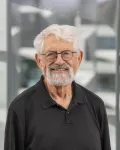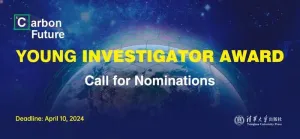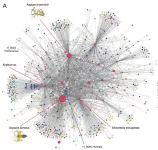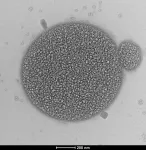(Press-News.org) Haim Sompolinsky, Professor in Residence in Harvard’s Department of Molecular and Cellular Biology and Department of Physics, has received the Brain Prize for his pioneering contributions to computational and theoretical neuroscience.
Considered the world’s most prestigious prize for neuroscience research, the Brain Prize 2024 is shared by Sompolinsky, Larry Abbott of Columbia University, and Terrence Sejnowski of the Salk Institute. All three scientists have helped uncover key principles governing the brain’s structure, function, and the emergence of cognition and behavior, according to the Lundbeck Foundation in Denmark, which awards the annual recognition.
Richard Morris, chair of the Brain Prize Selection Committee, explained the reasoning behind this year’s awardees.
“It is inconceivable to imagine modern brain sciences without the concomitant development of computational and theoretical neuroscience,” Morris said. “The three scientists have applied novel and sophisticated approaches from physics, mathematics, and statistics to study the brain. They have developed vital tools for the analysis of highly complex datasets acquired by modern-day experimental neuroscientists.”
Director of the Swartz Program in Theoretical Neuroscience at Harvard’s Center for Brain Science and Associate Faculty in the Kempner Institute for the Study of Natural and Artificial Intelligence, Sompolinsky has spent his career developing new theoretical approaches to computational neuroscience. His research has helped establish a deeper understanding of neural processes through rigorous conceptual frameworks found in physics.
Among his most important foundational work is the establishment and theoretical understanding of models of neuronal circuit function, including circuits for long-term memory and recall, as well as elucidating the brain’s delicate balance between opposing forces orchestrated by excitatory and inhibitory neurons.
“The brain is an intrinsically dynamic organ – that’s what’s fascinating about it,” Sompolinsky said. “Think about sleep, dreaming, wandering thoughts, creative actions in arts or sciences, problem-solving. The theory gives us a framework for conceptualizing, quantifying, and studying the link between circuit dynamics and these types of functionalities in the brain.”
Over the last 10 years, Sompolinsky has been captivated by advances in artificial intelligence technologies. His current research focuses on deep learning, language models, and reasoning models in artificial neural network settings. His goal is to adapt these models to be biologically plausible, using them to test new theories about how the brain works.
“For the first time in the history of the science of intelligence, we have artificial neural networks with strong similarities to the architecture and operation of the brain,” Sompolinsky said. “We have distributed, experience-dependent processing with amazing cognitive functions that are similar in many ways to human cognition. For me, this is a game changer, and this is where I am working – at the interface between AI and neuroscience.”
Venkatesh Murthy, the Paul J. Finnegan Family Director of the Center for Brain Science, said, “There are few who lay the foundation for a growing field, but that’s what Sompolinsky has done for theoretical neuroscience. He brought approaches from physics to understand various ways a network of neurons can interact, which has led to an understanding of how brains can store and retrieve memories, how a brain knows which direction its head is pointing, and how a proper balance between excitatory and inhibitory neurons can be maintained in our brains. Now, he is bringing his customary rigorous physics approaches (and his unbounded energy) to bear on the many exciting puzzles in high-level animal cognition, as well as to the startlingly sophisticated AI models such as ChatGPT. His presence at Harvard has been transformative to many communities here.”
Before joining the faculty of Harvard in 2022, Sompolinsky spent most of his academic career as a professor at Hebrew University in Jerusalem, where he is now emeritus. His Ph.D. is from Bar-Ilan University in Israel, and his first appointment at Harvard was as a physics postdoctoral researcher in 1982, working with Professor Bert Halperin.
Sompolinsky was the 2022 recipient of the Gruber Neuroscience Prize and was elected a fellow of the Israel Physical Society that same year. He is a Foreign Honorary Member of the American Academy of Arts and Sciences and a former recipient of the EMET Prize in Life Sciences-Brain Research.
The Brain Prize 2024 comes with an award of €1.3 million to be shared by the three recipients.
END
Harvard neuroscientist Haim Sompolinsky awarded Brain Prize
Recognizing pioneering theories of brain function
2024-03-05
ELSE PRESS RELEASES FROM THIS DATE:
Smoking during pregnancy may increase the risk of behavioral disorders in newborns, predicts AI
2024-03-05
Although several studies have linked smoking during pregnancy with neurodevelopmental disorders, the results of behavioral experiments in mice prenatally exposed to nicotine have been inconsistent. In a recent study, scientists from Japan developed a deep learning-based framework to automatically observe and classify mice behavior in such experiments, producing more accurate and unbiased results. They show that prenatal exposure to nicotine could increase the risk of autism spectrum- and attention deficit/hyperactivity disorders in newborns.
The fact that smoking is a risk factor for several diseases, including cancer, stroke, and diabetes, has been known for approximately ...
Dive into the future of molecular life sciences at #DiscoverBMB 2024
2024-03-05
Which natural products are helping solve biotech challenges? How can enzymes supercharge biodegradation for a greener tomorrow? What role does RNA play in cancer and other diseases? You’ll find the answers to these questions and more at Discover BMB, the annual meeting of the American Society for Biochemistry and Molecular Biology, to be held March 23–26 in San Antonio.
Secure your front-row seat to cutting-edge findings, approaches and technologies in the biological sciences by registering for a complimentary ...
Call for articles: Trends in Peace and Sustainability
2024-03-05
The Network for Education and Research on Peace and Sustainability (NERPS) at Hiroshima University is inviting submissions for Trends in Peace and Sustainability (TRENDS), an innovative academic platform dedicated to exploring the complex interplay between peace and sustainability. TRENDS aims to become a forum for scholars, professionals, and advocates to share their research, insights, and viewpoints on the pursuit of peace amid sustainability challenges. It aims to promote interdisciplinary engagement, stimulating conversation ...
2024 Carbon Future Young Investigator Award-Call for nominations
2024-03-05
The call for the 2024 Carbon Future Young Investigator Award is open!
About The Award
Tsinghua University Press announces the 2024 Carbon Future Young Investigator Award. This award is intended to recognize and encourage outstanding early career researchers in the areas of carbon-related materials, catalysis, energy conversion and storage, as well as low carbon emission process and engineering. The award includes an honorarium of $1,000 for each awardee (up to 10 awardees).
Eligibility
The nominee must be a current PhD student or postdoctoral researcher.
The nominee’s ...
Multinational collaborative research to improve climate-smart grain for Ethiopian farmers receives $4.9 million grant
2024-03-05
ST. LOUIS, MO, March 5, 2024 – The Donald Danforth Plant Science Center and the Ethiopian Institute of Agricultural Research (EIAR) have received a $4.9 million grant from The Bill & Melinda Gates Foundation to build on previous advances in gene editing of tef for reduced height and lodging resistance in advanced, farmer preferred tef lines.
The grant will support research to validate the improved semi dwarf tef in Ethiopia under greenhouse and multi location field conditions and generate lodging resistance ...
Groundbreaking survey reveals secrets of planet birth around dozens of stars
2024-03-05
In a series of studies, a team of astronomers has shed new light on the fascinating and complex process of planet formation. The stunning images, captured using the European Southern Observatory's Very Large Telescope (ESO’s VLT) in Chile, represent one of the largest ever surveys of planet-forming discs. The research brings together observations of more than 80 young stars that might have planets forming around them, providing astronomers with a wealth of data and unique insights into how planets arise in different regions of our galaxy.
“This is really a shift in our field of study,” says Christian Ginski, a lecturer at the University of Galway, Ireland, ...
Food web flexibility through time
2024-03-05
A theoretical experiment characterized the network architecture of a species-rich ecosystem over 8 months. Predator–prey interaction networks play a key role in structuring ecosystems, but ecological research has often treated such networks as static, despite the broadly accepted understanding of ecosystems as dynamic. Hirokazu Toju and colleagues followed the complex food webs between 50 predatory spider species and 974 prey species, including midges, springtails, mosquitoes, and aphids, for eight months. The studied ecosystem is a warm-temperate grassland ...
One way to improve a fusion reaction: Use weaknesses as strengths
2024-03-05
In the Japanese art of Kintsugi, an artist takes the broken shards of a bowl and fuses them back together with gold to make a final product more beautiful than the original.
That idea is inspiring a new approach to managing plasma, the super-hot state of matter, for use as a power source. Scientists are using the imperfections in magnetic fields that confine a reaction to improve and enhance the plasma in an approach outlined in a new paper in the journal Nature Communications.
“This approach allows you to maintain ...
Predicting who will experience aesthetic chills
2024-03-05
Researchers built a model that can predict with 73.5% accuracy when a person will experience aesthetic chills: shivers, goosebumps, or a feeling of cold down the neck or spine elicited by aesthetic stimuli, such as beautiful music or an inspirational speech. Felix Schoeller and colleagues surveyed 2,937 people from Southern California, through an online platform, gathering data on their personalities, demographic backgrounds, and emotional state. The authors then exposed survey respondents to 40 emotion-evoking audiovisual clips sourced from social media, selected because commenters had reported experiencing aesthetic chills while watching and listening. ...
Possible ‘Trojan Horse’ found for treating stubborn bacterial infections
2024-03-05
PULLMAN, Wash. – Bacteria can be tricked into sending death signals to stop the growth of their slimy, protective homes that lead to deadly infections, a new study demonstrates.
The discovery by Washington State University researchers could someday be harnessed as an alternative to antibiotics for treating difficult infections. Reporting in the journal, Biofilm, the researchers used the messengers, which they named death extracellular vesicles (D-EVs), to reduce growth of the bacterial communities by up to 99.99% in laboratory experiments.
“Adding the death extracellular vesicles to ...
LAST 30 PRESS RELEASES:
Boosting the cell’s own cleanup
Movement matters: Light activity led to better survival in diabetes, heart, kidney disease
Method developed to identify best treatment combinations for glioblastoma based on unique cellular targets
Self-guided behavioral app helps children with epilepsy sleep earlier
Higher consumption of food preservatives is associated with an increased risk of type 2 diabetes
NTU Singapore-led team captures first-ever ‘twitch’ of the eye’s night-vision cells as they detect light, paving the way for earlier detection of blindness-causing diseases
Global aviation emissions could be halved through maximising efficiency gains, new study shows
Fewer layovers, better-connected airports, more firm growth
Exposure to natural light improves metabolic health
As we age, immune cells protect the spinal cord
New expert guidance urges caution before surgery for patients with treatment-resistant constipation
Solar hydrogen can now be produced efficiently without the scarce metal platinum
Sleeping in on weekends may help boost teens’ mental health
Study: Teens use cellphones for an hour a day at school
After more than two years of war, Palestinian children are hungry, denied education and “like the living dead”
The untold story of life with Prader-Willi syndrome - according to the siblings who live it
How the parasite that ‘gave up sex’ found more hosts – and why its victory won’t last
When is it time to jump? The boiling frog problem of AI use in physics education
Twitter data reveals partisan divide in understanding why pollen season's getting worse
AI is quick but risky for updating old software
Revolutionizing biosecurity: new multi-omics framework to transform invasive species management
From ancient herb to modern medicine: new review unveils the multi-targeted healing potential of Borago officinalis
Building a global scientific community: Biological Diversity Journal announces dual recruitment of Editorial Board and Youth Editorial Board members
Microbes that break down antibiotics help protect ecosystems under drug pollution
Smart biochar that remembers pollutants offers a new way to clean water and recycle biomass
Rice genes matter more than domestication in shaping plant microbiomes
Ticking time bomb: Some farmers report as many as 70 tick encounters over a 6-month period
Turning garden and crop waste into plastics
Scientists discover ‘platypus galaxies’ in the early universe
Seeing thyroid cancer in a new light: when AI meets label-free imaging in the operating room
[Press-News.org] Harvard neuroscientist Haim Sompolinsky awarded Brain PrizeRecognizing pioneering theories of brain function





